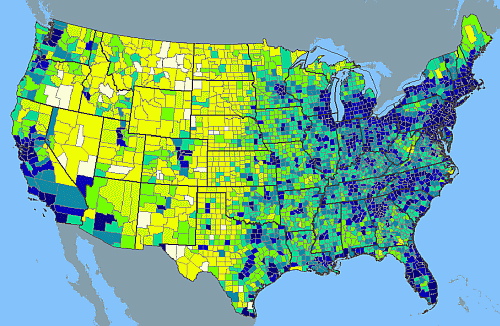The national median existing-home price in July 2010 was $182,600 [source]. The median household income in 2008 was $52,029 [source]. To account for some rising income and play it conservative we’ll call it $55,000 for 2010. I haven’t found any official number later than 2008. We should also note that this estimation ignores the current recession and its impacts like reduced hours, layoffs, and pay cuts.
The old rule of thumb is the maximum house you can afford is 3X your gross income minus obligations (debts). More than that and you’re odds of running into trouble making payments and affording upkeep/taxes becomes too high. That means the median affordable house is $165,000 if the household had no obligations. We of course live in a world of car loans/leases, $100+ cell phone bills, expensive broadband internet, and rising food prices. According to MSN Money the average household owes $8,000 in credit card debt alone [source].
For a more specific example, New Jersey’s median household income in 2008 was $70,347. Per Capita New Jersey is one of the most affluent states in the country. The median value of homes in 2000 was $170,800 [source]. The median price in the Northeast in July 2010 was $263,800. Assuming the median income rose to $75,000 the maximum affordable house is $226,041, again assuming no other obligations.
I should also note this rule of thumb was before the bubble and before banks became borderline paranoid about lending money.
The home ownership rate in the US is 67.8% [source (xls)] which means it’s a pretty representative part of the US population, hardly a niche group which we could suggest lives outside these numbers.
Using this back of the envelope calculation I propose that the housing bubble for existing homes doesn’t end until either the median existing-home price falls to meet the maximum affordable house index, or the incomes rise and debts fall to meet the existing-home price index. Only then will the supply and demand curve finally meet and the market volume will increase. Personal income and wealth are too tight for either the supply or demand side to cave right now. I further propose that housing prices will fall faster than incomes will rise.
Translation: the housing market hasn’t finished correcting.
